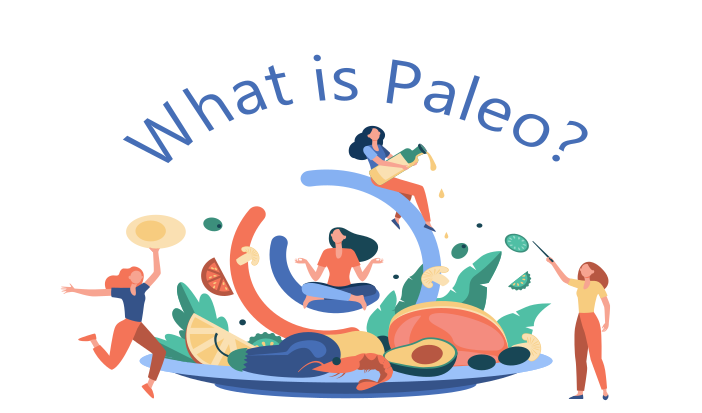There are many different ways of eating that people can ascribe to. When I make recommendations I often use the terms Paleo, Low Carb, Keto, Ancestral and / or Whole Food to refer to a specific way of eating. Over the next few weeks I am going to give a brief explanation of each of these ways of eating and why I might recommend one or the other. Today I am going to start with Paleo.
Over the past decade the term Paleo has become more and more common. When I first heard the term I thought it was another fad diet where people would only eat what the cavemen ‘supposedly’ ate. I didn’t really understand the diet and I thought it would eventually disappear. I started to notice the term Paleo on lots and lots of products in the grocery store but I never dug in to find out what it really was. The term Paleo had developed into a negative connotation to me and I thought it was a marketing gimmick. Then while I was attending my classes at the NTA we were tasked with reading several books that talked about the Paleo diet and my eyes were opened. I didn’t realize the amount of research that had gone into this way of eating and I didn’t know about the health benefits of eating this way.
Paleo and ancestral eating refer to very similar ways of eating. In a Paleo diet we strive to eat the foods that humans have been eating for thousands of years. We do this because our bodies have evolved to digest and process these foods better and more efficiently than other foods. When we look at the Paleo food pyramid you will see that the base of the pyramid is going to be vegetables. Vegetables should make up the bulk of the diet.
The second level is meat, fowl, seafood and eggs. Our ancestors have been eating animal products for as long as we have been walking upright. The difference between then and now is that our ancestors ate nose to tail. Meaning they ate every part of the animal: fat, muscle tissue, organs, etc. They knew that the organs were the nutrition bombs and would never just throw that part out. Today we typically eat only the muscle tissue. The organs are full of nutrients that our bodies need and we need the good healthy fat for good cell membranes, vitamin absorption, and many other functions.
The third level of the pyramid is your whole food sources of healthy fatty foods. Foods like avocado, coconut and olives. This level also includes your nuts and seeds. When we say nuts, we are referring to nuts like walnuts, pecans, Brazil, and macadamia. We are not referring to peanuts (which are actually a legume).
The fourth level is your healthy fats. Animal fats, olive oil and coconut oil are some of the oils that are great for our bodies. Avoid seed oils, like corn and canola, as they are damaged during the extraction process and are rancid and oxidized before they even get into a bottle.
Finally at the top of the list you will find fruit in season. Our ancestors didn’t have access to exotic fruits from all over the world. They didn’t have rows and rows of fruit and fruit juices available to them at all times. They would often come across fruits in their local areas, but only when they were in season. Our bodies are not made to process the large amounts of fruits that we have available to us today. Eat these sparingly.
So, now that you know what foods are on the pyramid, let’s talk about the foods to avoid on a Paleo diet. The Paleo diet excludes all grains, sugar, dairy and other starchy carbs. There is no whole grain bread, pasta, rice, corn, beans or potatoes. We didn’t start eating these foods until very recently in our evolution and our bodies often have difficulty breaking down these foods. Many people find that by eliminating these foods they experience far fewer digestive complaints.
When would I recommend the Paleo diet? The Paleo diet is very nutrient dense and would be great for everyone. It is also very good for helping you to identify food sensitivities since it excludes so many of the common food allergens such as dairy and wheat. It would be the first step that I would recommend for implementing a gut healing protocol. This diet excludes many of the common processed foods, so it can also be very healing for someone dealing with blood sugar regulation issues like Type 2 Diabetes or hypoglycemia. I would recommend this diet to everyone who is wanting to eat a more whole food diet since it is full of the nutrients that our bodies need to survive.
At first this diet might seem limiting but once you understand how to prepare and plan for meals using the foods in the food pyramid, you will find that it is actually very diverse.
For more information about the Paleo diet check out the book “Wired to Eat” by Rob Wolff or “Paleo Principles” by Sarah Ballantyne. Both are great resources.
Image Creator: “Designed by pch.vector / Freepik”
